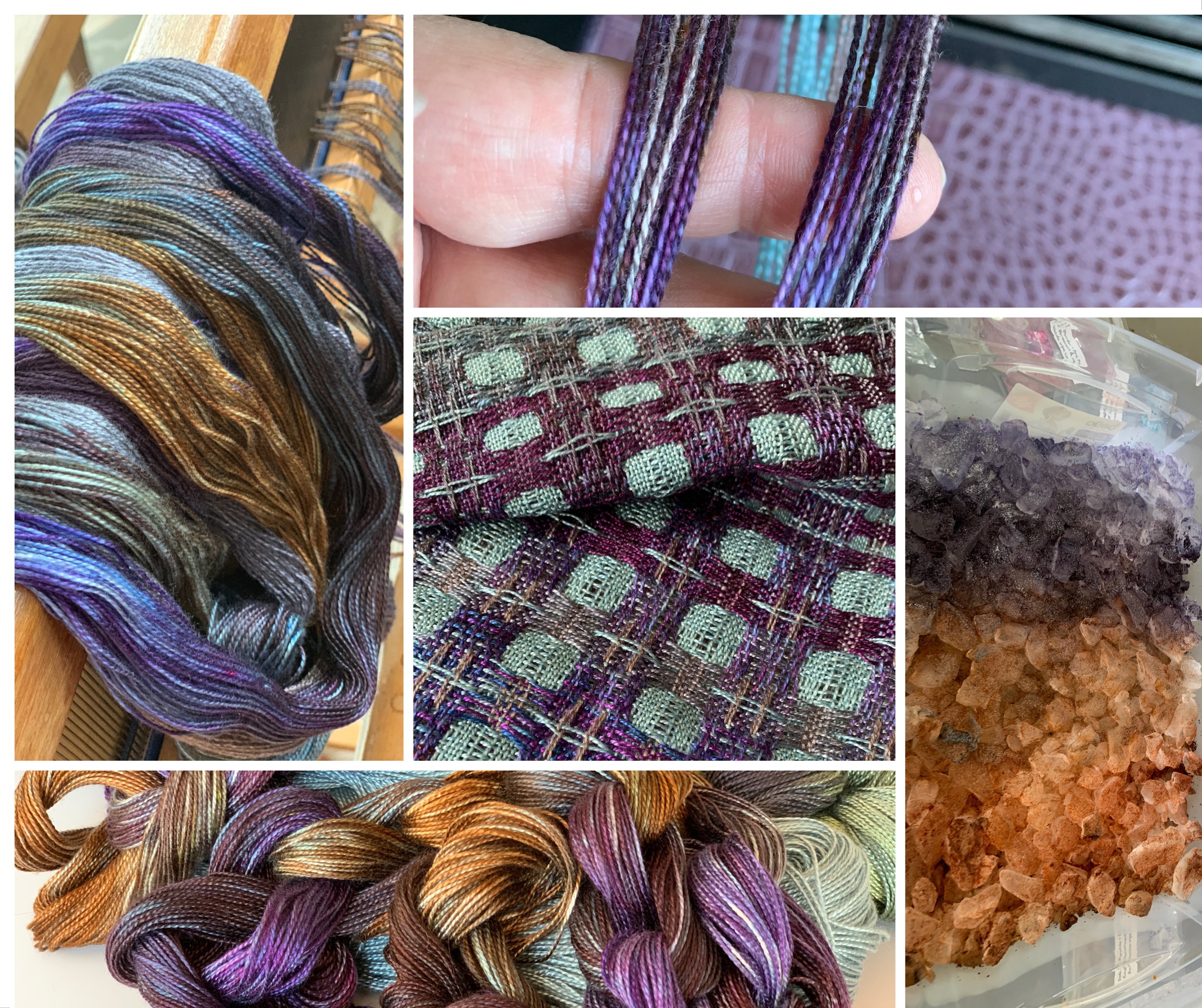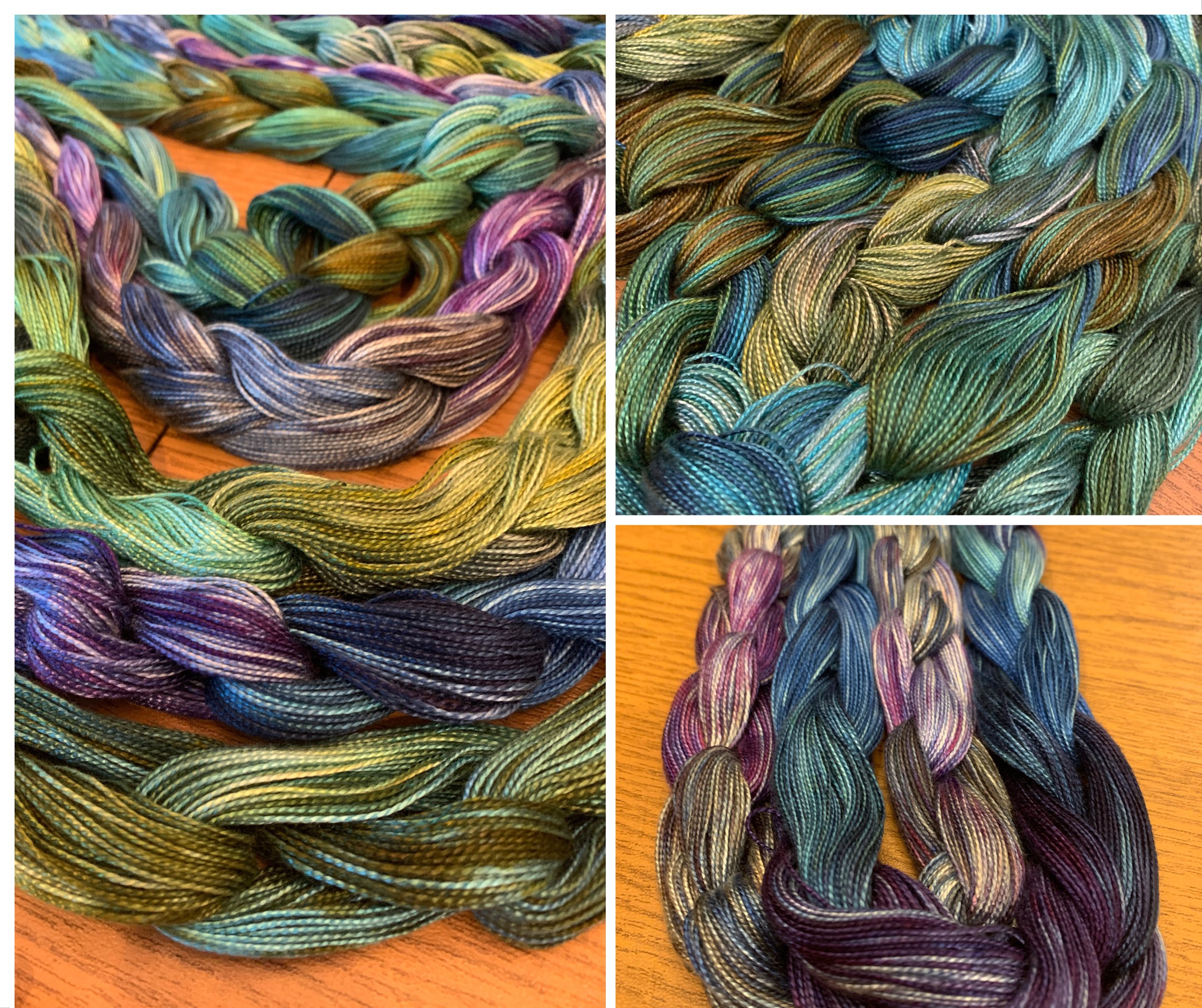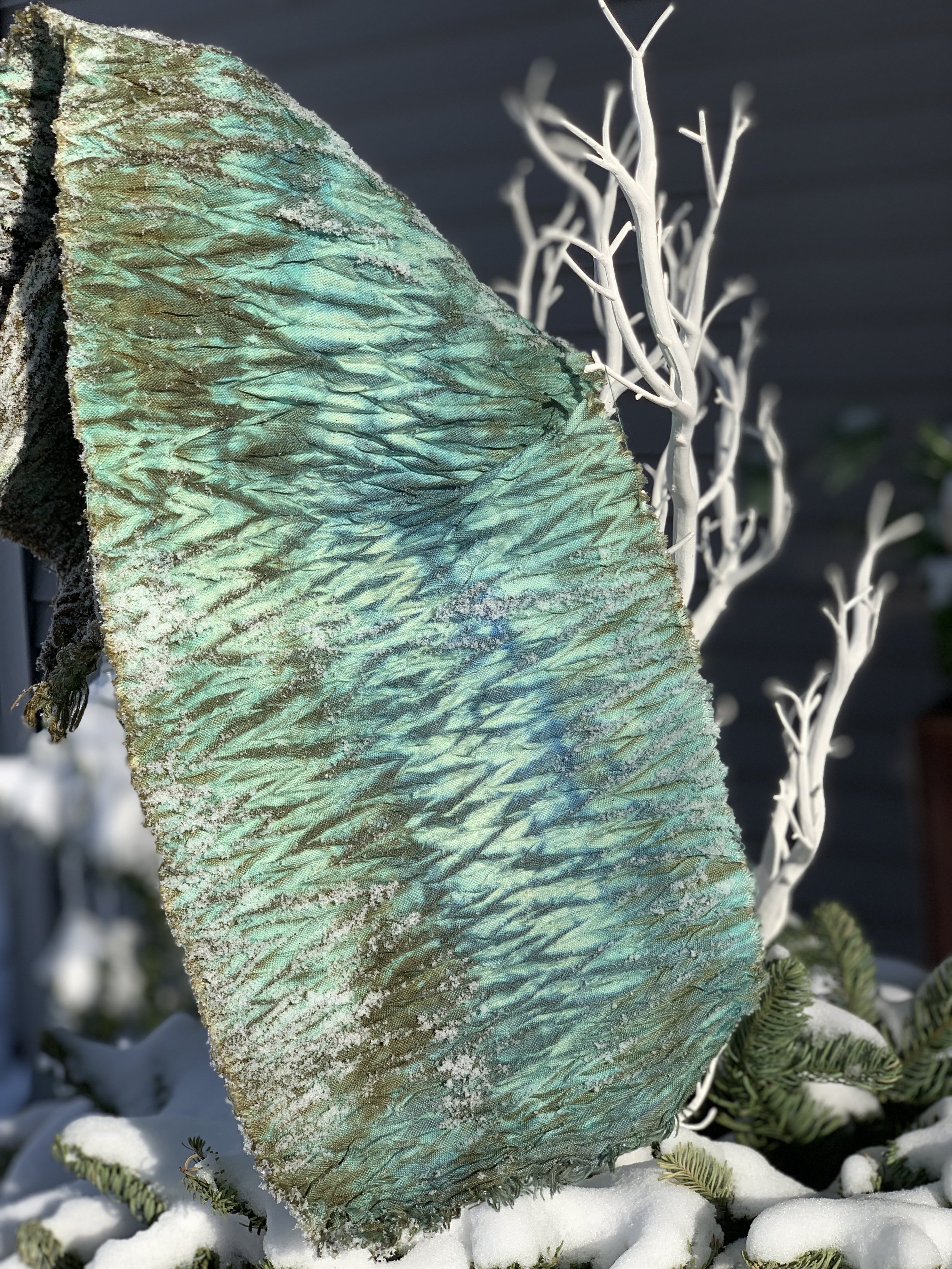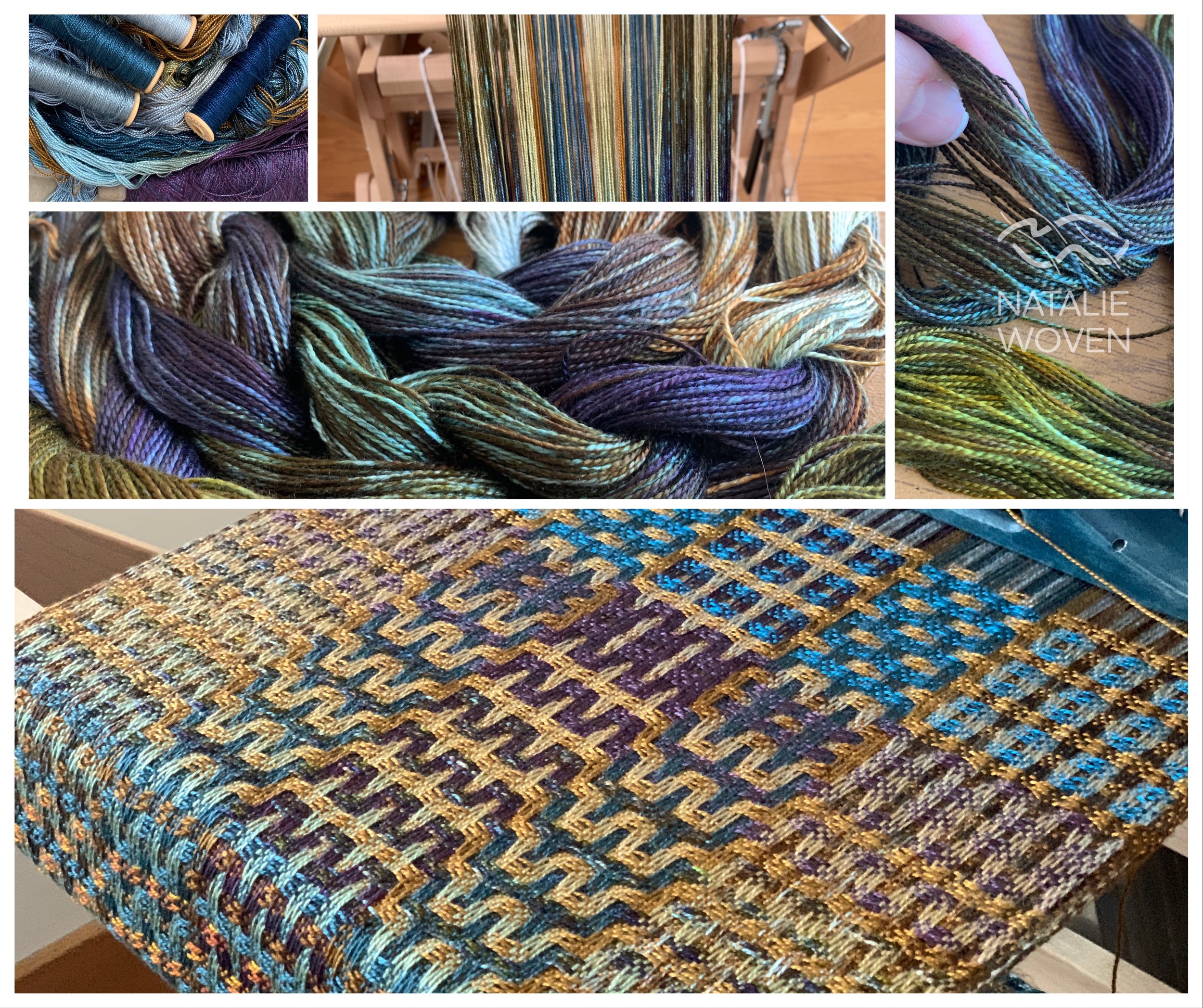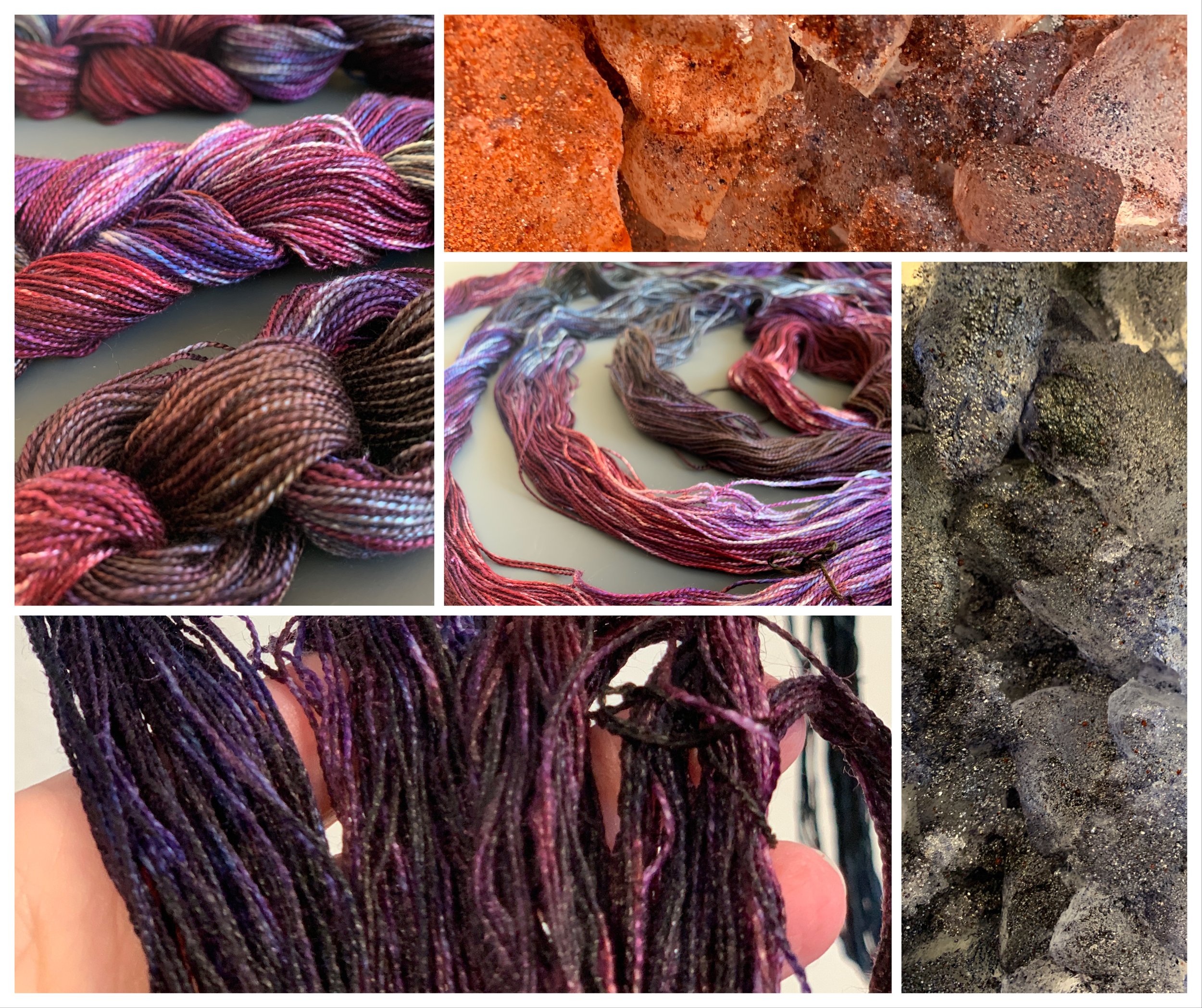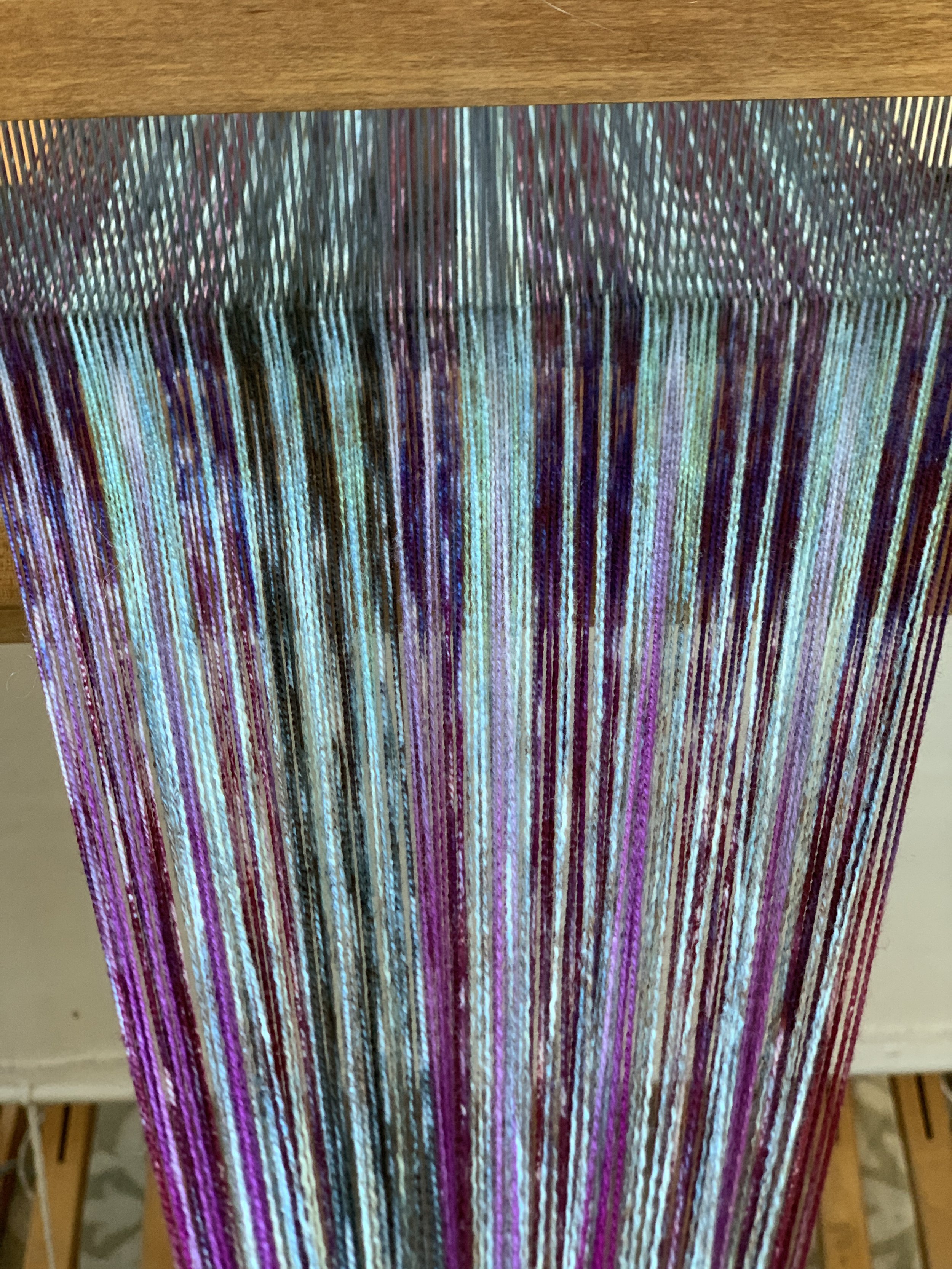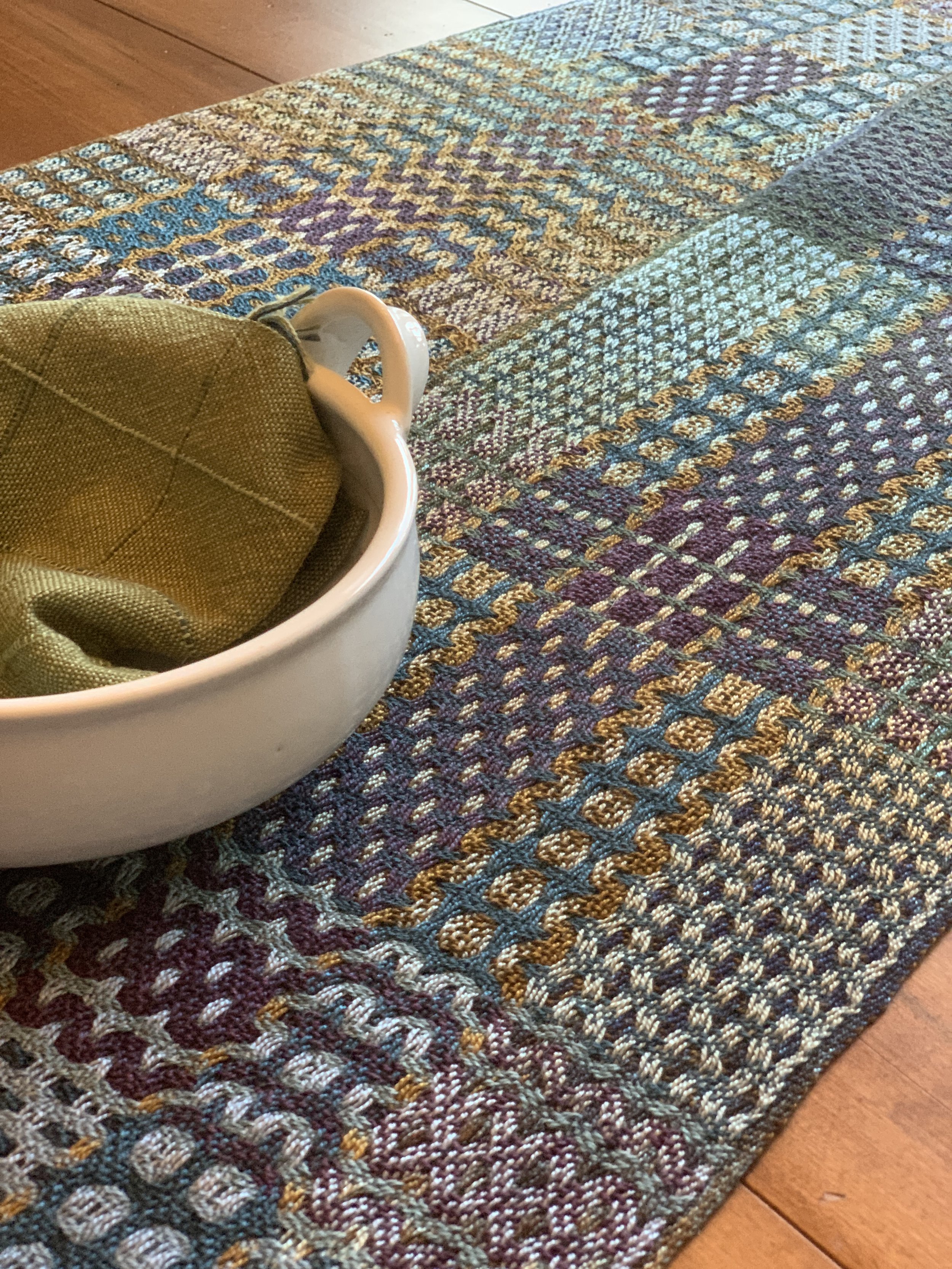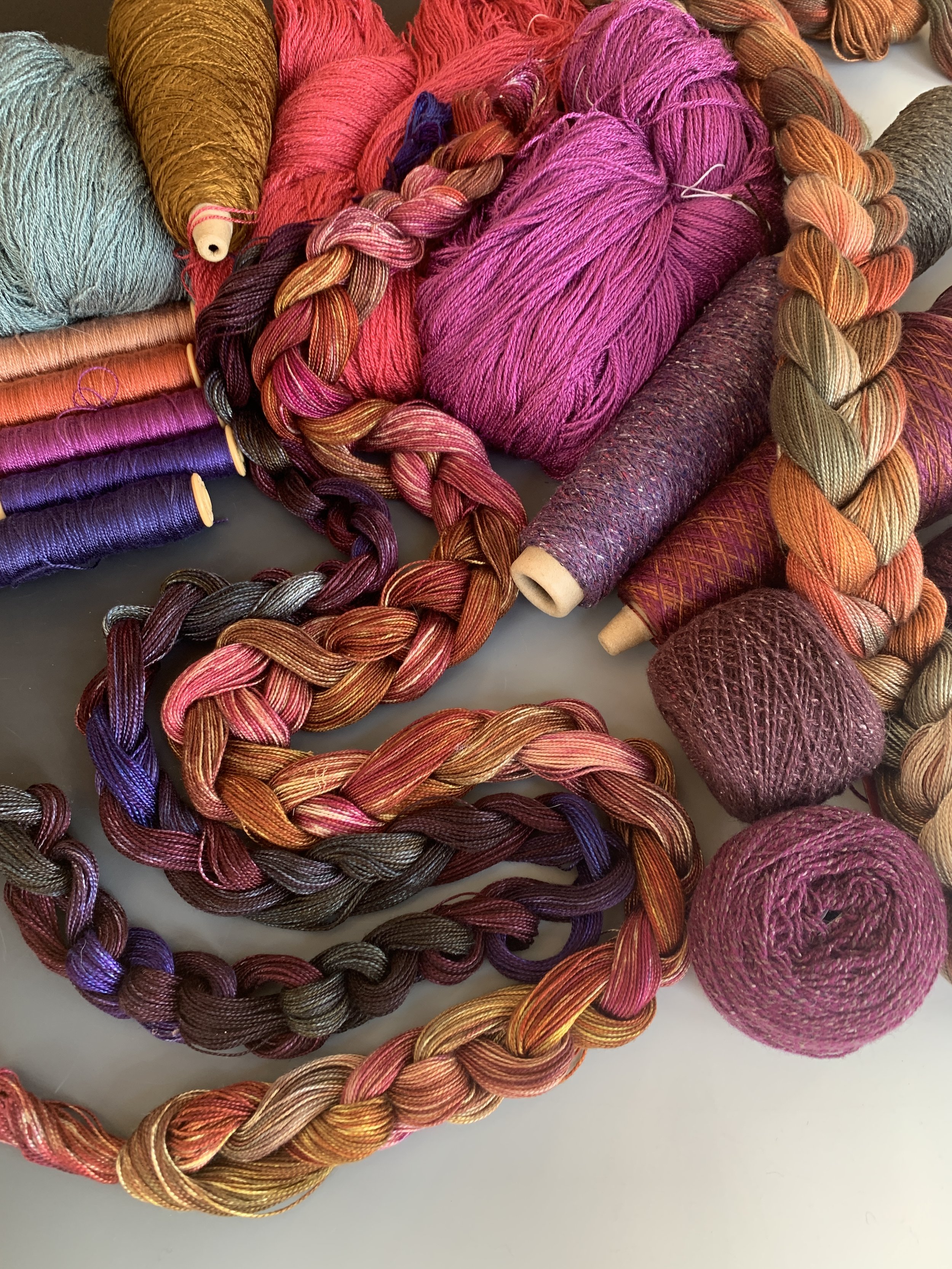Trust the Muck with Ice Dyeing
I’ve dabbled in dyeing over the years, but have really enjoyed ice-dyeing my own fabric and yarn to weave with. A great resource which has the soda ash and fiber reactive dye mixed together in a 3:1 ratio can be found at Waxon Studios in Asheville, NC. Jess (owner) taught a virtual class at MAFA 2020 and demonstrated dyeing on fabric. There are many methods such as DOI (Dye over Ice) and DUI (Dye Under Ice) as well as “muck” dyeing and incline dyeing. I decided to make a tunic and children’s tops for summer fun using DOI and muck methods.
My next goal was to dye yarn so I experimented with 5/2 Tencel and 5/2 cotton and used the same colors: Blue Grey, Bronze, Eggplant and Lavender. To prepare my yarns, I soaked in Synthropol and a lukewarm bath. I found I preferred the sheen of the Tencel yarn and how the color changes seemed to transition from one color to the next. I used about 5 different weft colors of 5/2 Tencel yarns to interact with the final woven warp.
Next batch of ice-dyed 5/2 Tencel warps were created to take to the Outer Banks for a weaving workshop. Here were some of my favorite combination colorways:
Cayman Islands, Blue Grey, Avocado (top right)
Cayman Islands, Indigo, Avocado, Moss (top right)
Cayman Islands, Sky Blue, Avocado Moss (top right)
Sky Blue (sprinkled over Blue Grey), Lavender (bottom right)
Sky Blue, Indigo, Lavender, Midnight (bottom right)
Left photo shows combinations.
Typically I’ll use a seven pound bag of ice during the summer in one tub and then a little more from my freezer to fill in the holes (1” to 2” total). The past winter snow storm gave me an opportunity to use snow to fill in spaces between ice. Other controls were a really slow melt and sitting in the muck for over 24 hours. Slow melts are supposed to create good color separation. Cotton Shibori cloth, a Tencel warp and skein were used for this batch. Colors were Bronze, Eggplant, a touch of Blue Grey, Moss and a touch of Chartreuse for warp and skein.
Woven Ice Dyed Warp
A second snow storm provided additional opportunities for dyeing and I was eager to try new colors from a winter collection: Winterberry and Timberwolf. Of course I mixed in some other shaker colors!
Timberwolf, Winterberry and Lavender
Timberwolf, Blue Grey and Deep Space
Sprinkled over 5/2 Tencel yarn. Love the transitions in color from one area of ice to the next!
April 2023 So I’m still ice-dyeing to create different color palettes for the purpose of mixing with other painted warps or ice-dyed warps. My most recent combination used Winterberry, Shitake, Oxblood Red with Lemon Yellow over top, and Amythest. It is shown with a cool mix of Winterberry, TimberWolf and Lavendar on the left center. Some of my favorite weft yarns include tussah silk, ITO silk noil, and Shibui Knit Pebble in alternating weft blocks with cotton or Tencel. I’m planning to mix it with Rustic Wood (on the right) by Carr Park Artisans.
After experimentation on using the leftover dye for small skeins, cotton cheesecloth, and fabric, I’ve found a new love in incorporating tied resists for an indigo palette and macrocapillary warp dyeing. On fabric, this effect is referred to as microcaprillary, which was my first experiment. I love how the leftover dye separated evenly on a fabric I was using for mixed media arts. It was left in the tub for over 48 hours with part of the fabric hanging out. In using pre-wound warps, I used plastic clothespin to secure the yarn to the 28 quart tub lip. I like to use a 28 quart tub because I can layout my warps in a repeat fashion or dye clothing tops. The effect created a lovely gradient of aqua, blues, and green. After 24 hours in the tub, I moved the plastic clothespins so the dye can reach the yarn. It then sits in the tub for another 24 hours before rinsing. It is the warp on the outer left in the photo below.


